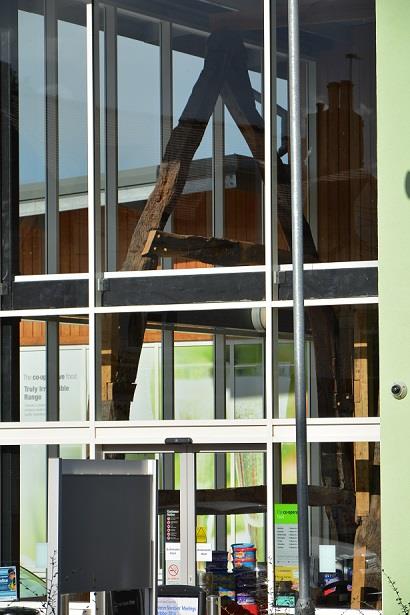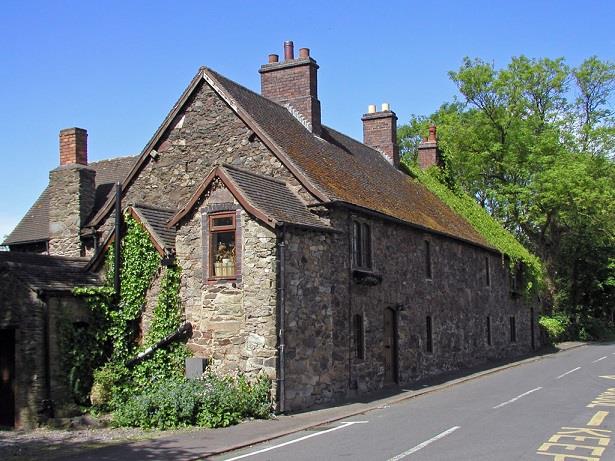Early History
Early History
Whitwick is first recorded as Witewic in the Domesday Book in 1086 as an estate given to Hugh de Grantmesnil by William I. The name is a combination of two Old English words: the first part deriving from the word “Hwit” meaning “white” or “Hwita”, a man’s name; the second part from the word “wic” meaning a dairy farm. Therefore, the village name could be a reference to “Hwita’s dairy farm” or the “white dairy farm”.
Isolated archaeological finds and artefacts reveal ancient sites in and around Whitwick but the historic core of the village is medieval. Whitwick Castle, a Norman motte and bailey castle, stood in the area now known as Castle Hill. It is the only scheduled monument in the village although there are no remains of the building. The castle was held by a keeper named William de Seneville in 1204 for King John and by the end of the 13th century by John Comyn, Earl of Buchan. In 1321, Henry Beaumont had a licence to crenellate. Later in the 14th century the castle was out of use and in a ruinous state by 1427. Foundations of the castle were noted as visible in 1800, however parts of the castle site were destroyed or damaged by the construction of the railway in the 1880s.
Whitwick was one of the four ancient manors whose lands made up the interior of Charnwood Forest. The story of the Lords of the Manor of Whitwick before the 1600s is intriguing, complex and subject to ongoing research. From the early 17th century until the 19th century, members of the Hastings family were Lords of the Manor until most of their land in Whitwick was sold.
Whitwick Parish Church
St. John the Baptist
The parish church dates from the 13th century and is the oldest building in the village. The building was heavily restored and redecorated in 1848 – 1850 but original features remain in the south doorway. The font dates from the 14th century. A natural spring rises beneath the crypt at the east end.

The Co-op’s 17th Century Twist
Evidence from an early 17th century building can be seen in the purpose-built porch entrance to Whitwick Co-op store in the Market Place. Here two huge timber cruck trusses stand very close to where the original three-bay cruck-framed house was sited from which they were removed in 2014. The timber used to construct these trusses was felled in 1620 according to tree-ring dating, making this the latest securely dated cruck-framed building in Leicestershire. Box frame dwellings had become the norm by the 17th century.

Whitwick’s Charter
Whitwick’s Charter
In 1293, John Comyn purchased a Charter from Edward I. This granted to Whitwick a Tuesday market. In addition, it established a fair each year which lasted for four days around the time of the feast day of St John the Baptist in June. Until recently, a travelling fair, known as Whitwick Wake, was held at various venues in the village in June. It appears that the market did not thrive but it was revived in 1836 and prospered until competition from the market in the new town of Coalville proved to be overwhelming and trading ceased in the early 20th century.
Other Significant Historical Buildings in Whitwick
Other Significant Historical Buildings in Whitwick
The Old Vicarage
The oldest dwelling in the village, and the only thatch-roof property, is the Old Vicarage in Silver Street. This is now the Silver Oaks Residential Care Home. The building has remnants from the 14th and 17th centuries and has the date 1714 above the door. Significant alterations were made in 1830 and again later in the 19th century.
In 1828, it became the home of John Wordsworth who was curate to Rev Francis Merewether, Vicar of Whitwick. John Wordsworth was the eldest son of the poet William Wordsworth. Although his stay in Whitwick was relatively brief, members of the Wordsworth family visited frequently, in particular Dorothy Wordsworth. His sister Dora drew a sketch of the Vicarage which is now in the Wordsworth Museum.
In 1864, the property became the home and surgery of the village doctor.

Sketch by Dora Wordsworth
Market Place School
The school building in the Market Place dates from 1858. Built as a National School, it is constructed of Charnwood granite and has a Swithland slate roof. It was used as one of the village schools until 1993. The exterior of the building has changed little but it is now used as a private nursery.

The Old Convent
On Parsonwood Hill, the building known as the “Old Convent”, now a private residence, was originally built as a Roman Catholic priests’ house and was completed in 1848. It was paid for by Ambrose de Lisle of Grace Dieu and remained a presbytery until 1875 when it became a convent. Adjacent to the Old Convent stood the original Holy Cross Chapel and burial ground which were consecrated in 1837.


